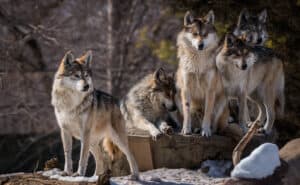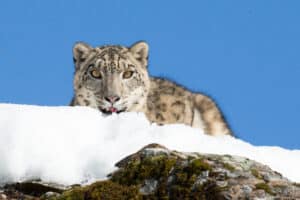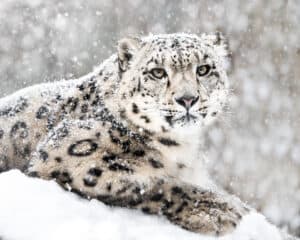Few creatures can survive amid the thin air, jagged rocks, and bitter cold of the Himalayan Mountains. However, one of the most captivating big cats on earth calls the soaring heights of this high alpine realm home — the snow leopard. Often referred to as the “ghost of the mountains”, these elusive and iconic felines gracefully roam the harsh terrain as the epitome of untamed elegance and wild beauty. While the presence of adult snow leopards is truly awe-inspiring and jaw-dropping, it is equally enchanting to witness just how adorable and incredible their precious offspring are. So, let’s dive in and take a look at 10 cute pictures and 10 amazing facts about baby snow leopards!
1. Baby Snow Leopards Are Blind and Helpless at Birth
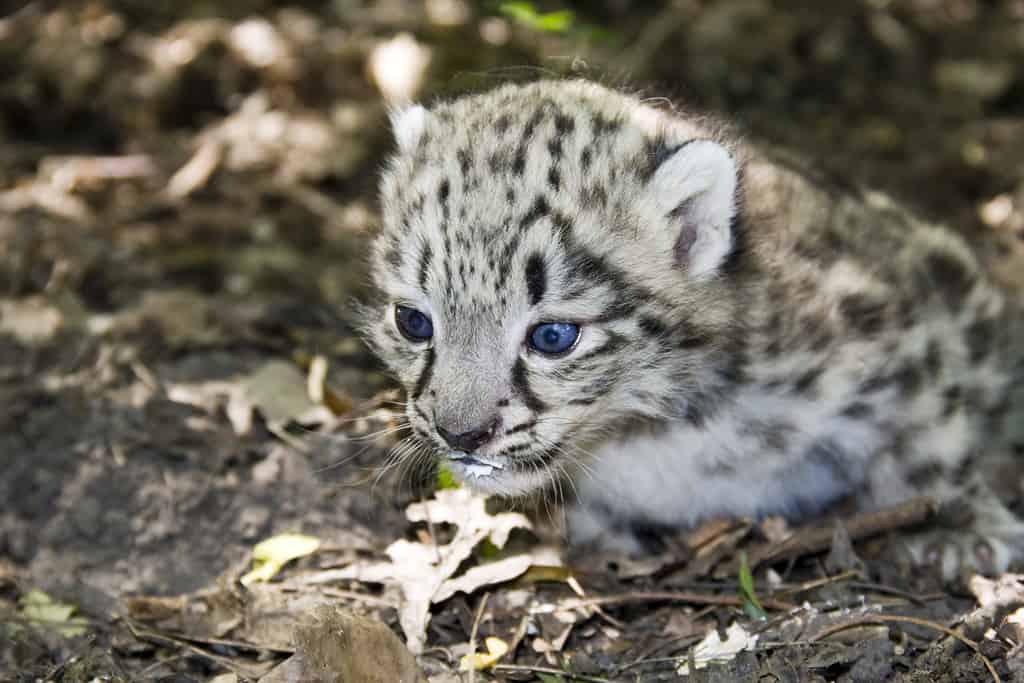
Baby snow
leopard
cubs do not eat solid foods until they are at least two months old.
©belizar73/iStock via Getty Images
A full grown snow leopard typically measures 2 to 5 feet long and weighs 60 to 100 pounds. However, baby snow leopards are much smaller. In fact, when they are first born, baby snow leopards only weigh around 1 pound!
The newborn cubs are helpless at birth due to their small size, lack of mobility, and blindness. Baby snow leopards open their eyes when they are about seven days old and can walk on their own when they are about five weeks old. However, they continue to stay in the safety of their den for at least two or three months, where their attentive mother nurses and protects them. At around two months old, baby snow leopards begin to eat solid food.
2. Baby Snow Leopards Are Born at High Altitudes
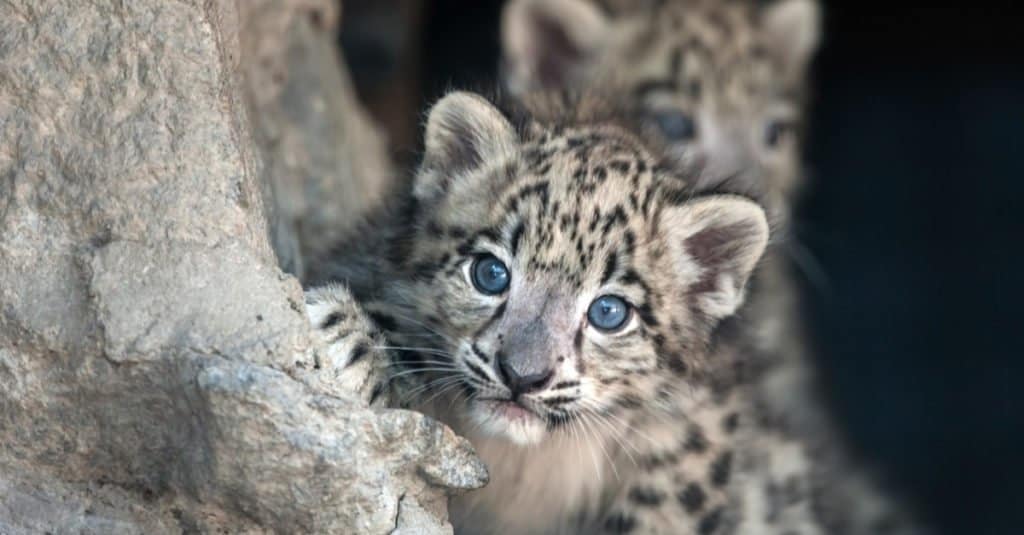
Baby snow leopards are well-adapted to their cold and rugged environment.
©Kwadrat/Shutterstock.com
Snow leopards are a unique species of big cat that live in the mountains of South and Central Asia. However, there is still so much we don’t know about these mysterious creatures due to their solitary and secretive behavior, and because they live in inaccessible areas. Snow leopards typically live at elevations that range from 9,800 to 14,800 feet!
Baby snow leopards are born in this remote and secluded environment, which serves as a shelter from lurking predators and other dangers. The lofty elevations of this habitat produce frigid temperatures, but fortunately newborn cubs are born with lush, fur coats.
3. Many Baby Snow Leopards Share a Birthday
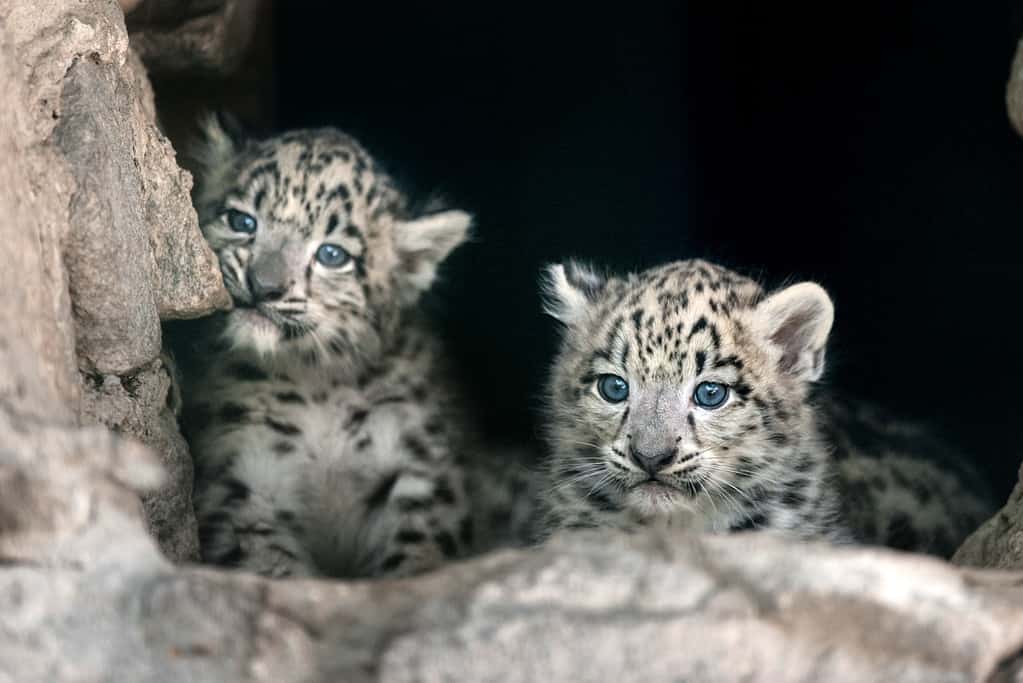
Baby snow leopards are actually more closely related to tigers than leopards!
©Nemyrivskyi Viacheslav/iStock via Getty Images
Snow leopards have a very short mating season in the late winter or early spring. Because of this, snow leopard baby snow leopards are usually born around the same time. Following a gestation period of around 90 to 100 days, female snow leopards typically give birth to two or three cubs between April and July. However, the majority of snow leopard cubs are born in June or July, and many of them are born on the exact same day!
4. Baby Snow Leopards Are Raised by Single Moms
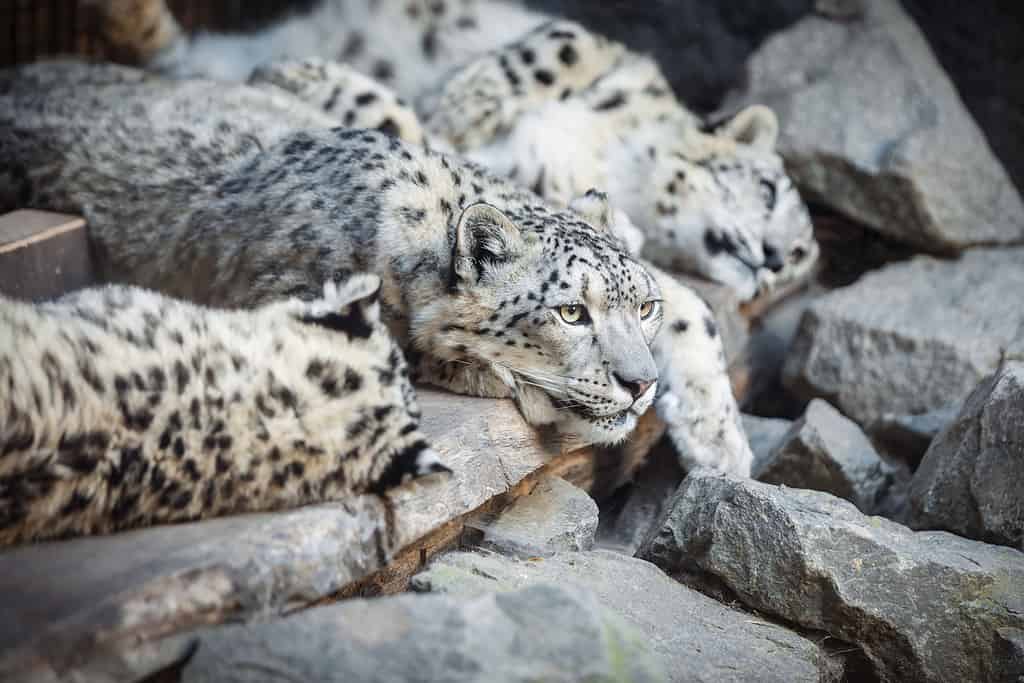
Baby snow leopard cubs stay with their mother for nearly two years.
©Frank Anschuetz/iStock via Getty Images
Snow leopards lead solitary lives in the lofty heights of Asia’s mountainous regions. Male and Female snow leopards usually only come together during a brief mating season, which typically spans around one week.
After mating, female snow leopards venture off on their own to give birth and raise their cubs alone. Although they typically possess extensive territories, once the cubs arrive, leopard mothers modify their behavior and stay within a smaller area to stay close to their little ones. At around three months of age, the cubs start exploring the world beyond their den in the company of their mothers. Usually by six months, they start to accompany their mothers outside the den. Under her watchful eye, the cubs learn invaluable survival skills. Their mothers teach them how to hunt and navigate the challenging terrain, targeting prey such as ibexes or Himalayan blue sheep.
5. Baby Snow Leopards Have Excellent Camouflage
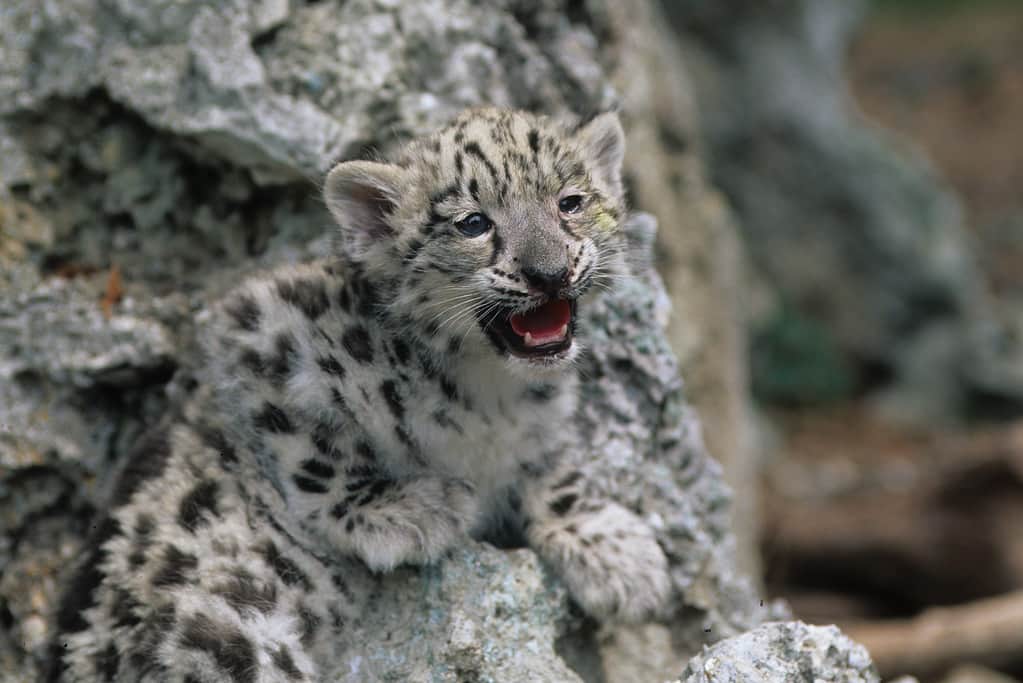
Sometimes snow leopards are called “ounce”, which comes from their genus name,
Uncia.©Michel VIARD/iStock via Getty Images
Although they are born blind and helpless, baby snow leopards come into the world with a full coat of thick hair to protect them from the cold of their harsh environment or habitat. They have beautiful white or gray fur and black spots on their heads and neck.
Despite being born blind and helpless, baby snow leopards enter the world equipped with a luxurious coat of thick fur. Their fur, which measures around 2 to 5 inches in length, serves as insulation against the cold in their frigid habitats. Snow leopards are white or gray, adorned with black spots on their heads and necks. They also have larger rosette-like spots on their backs, sides, and tails. Their spotted coats provide exceptional camouflage amid the rocky terrain.
6. Baby Snow Leopards Have Enormous Paws
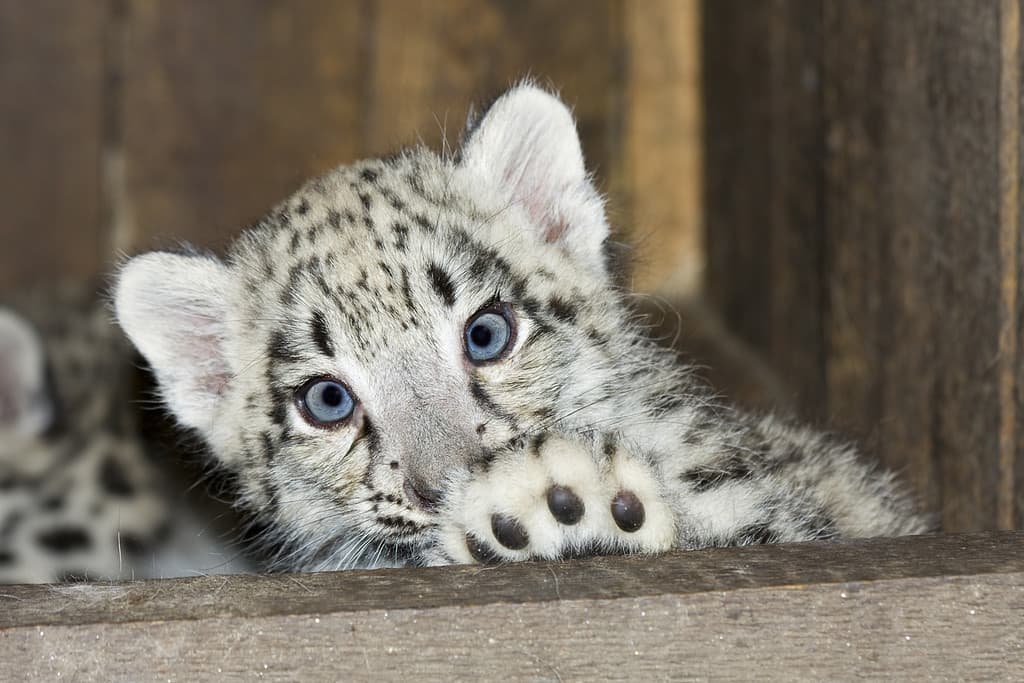
Snow leopards have large ranges, sometimes up to 400 square miles.
©belizar73/iStock via Getty Images
Baby snow leopard cubs are incredibly well-adapted to survive in the cold, mountainous environments of their native range. They possess many remarkable traits that enable them to thrive in such harsh conditions, such as their thick, camouflaged fur, which provides exceptional insulation. Additionally, their small, rounded ears minimize heat loss, while their humongous and broad paws act like their own built-in snowshoes, distributing their body weight on snowy terrain. They also have additional fur on the underside of their paws that provides traction on steep and unstable surfaces.
7. A Baby Snow Leopard’s Tail Is Almost as Long as Their Entire Body
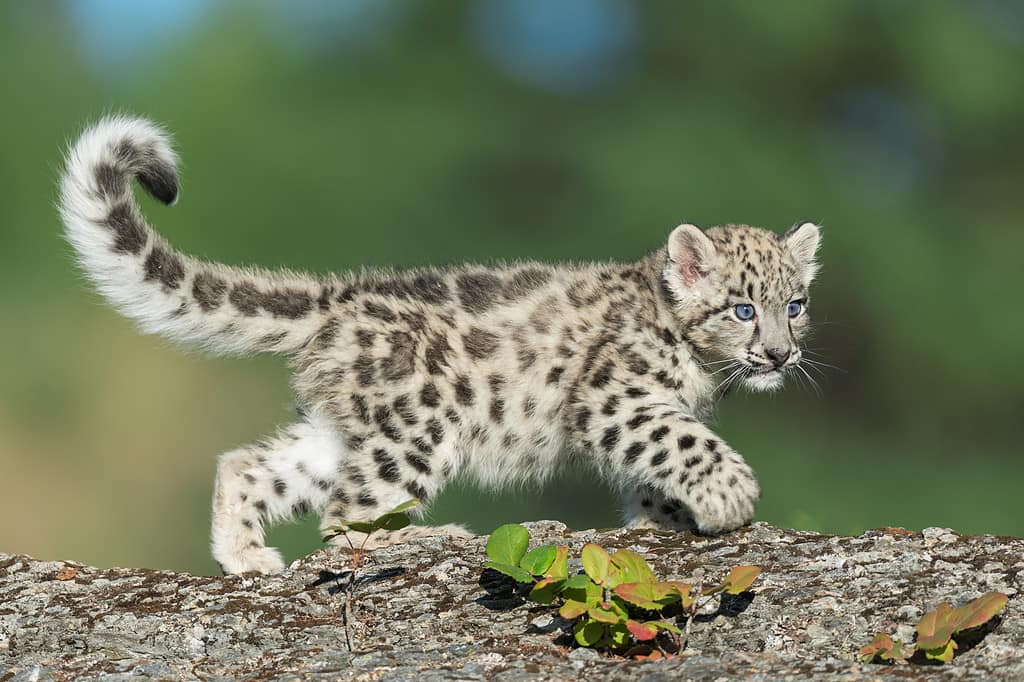
Snow leopards are typically not aggressive toward humans.
©gnagel/iStock via Getty Images
Baby snow leopards possess remarkably long and flexible tails — noticeably longer than those of other feline species. In fact, snow leopards boast the longest tails among all cats! This impressive tail aids in maintaining balance as they navigate treacherous rocky terrain.
In addition, snow leopards have very thick tails, which serve as a built-in storage unit for fat. Covered with a dense layer of fur, these tails provide a comforting blanket. Snow leopards curl up with their tails over their faces, ensuring warmth and protection while they rest. When her cubs are particularly tiny, however, snow leopard mothers use their own large tails to keep their babies safe and snug.
8. Baby Snow Leopards Are Incredible Jumpers
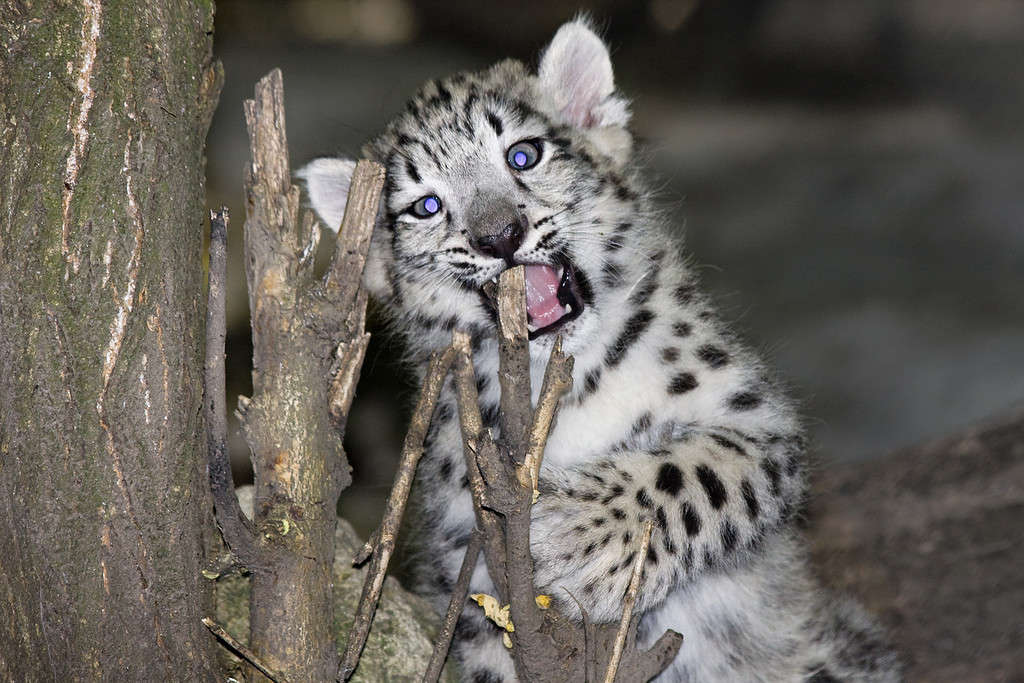
Snow leopards are carnivores.
©belizar73/iStock via Getty Images
As they develop and grow, baby snow leopards quickly learn the skills they need to navigate and thrive in their environment. With short front legs and long, muscular hind legs, these incredible cats possess unbelievable jumping abilities. Snow leopards can jump 30 feet into the air and leap across a distance of 50 feet, surpassing other big cats with their incredible jumping prowess. Their agile bodies and lengthy tales enable them to scale rocks and trees, effortlessly propelling themselves up to six times their own body length.
9. Baby Snow Leopards Are Very Vocal
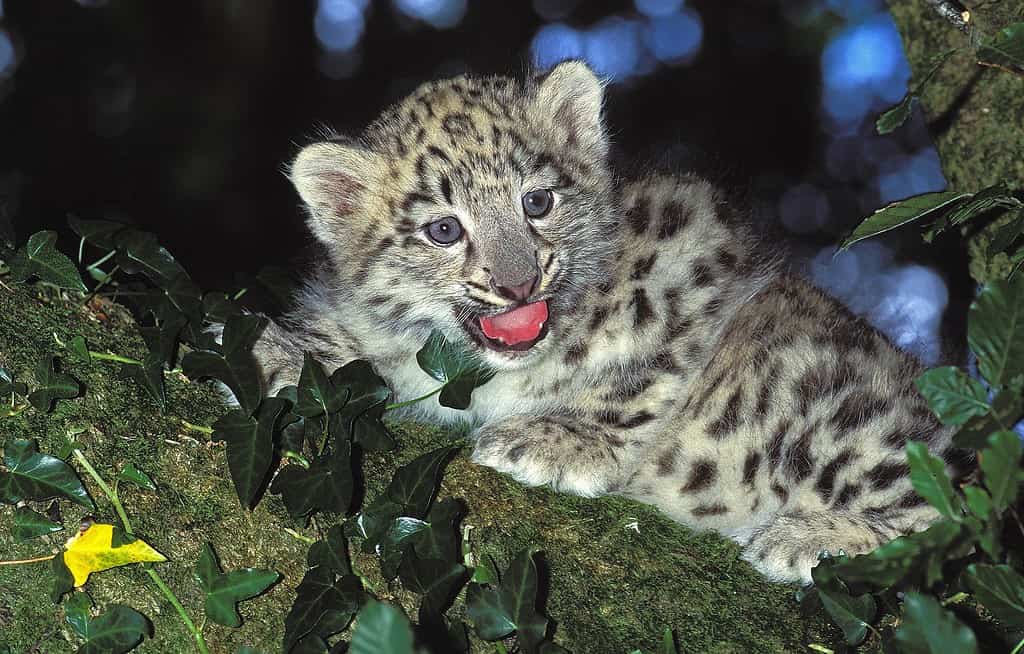
Snow leopards are crepuscular, which means they are most active at dawn and dusk.
©slowmotiongli/iStock via Getty Images
There are few things that can rival watching snow leopard cubs play. Baby snow leopards are incredibly social creatures, and fill their days with lively activities like wrestling matches, chases, and even surprise attacks on their unsuspecting mothers. Effective communication is key in these adorable family systems, and baby snow leopards have a plethora of ways to express themselves.
Baby snow leopards engage in light-hearted conversations with their mother and siblings, utilizing a wide range of vocalizations. These include growls and yowls, hisses, mews, chirps, grunts, purrs and moans. They even have a unique breathy snort called a “prusten”. Intriguingly, however, despite their impressive repertoire and feline DNA, snow leopards can’t actually roar! Instead, they emit a unique puffing sound known as a “chuff”.
10. Baby Snow Leopards Are in Trouble
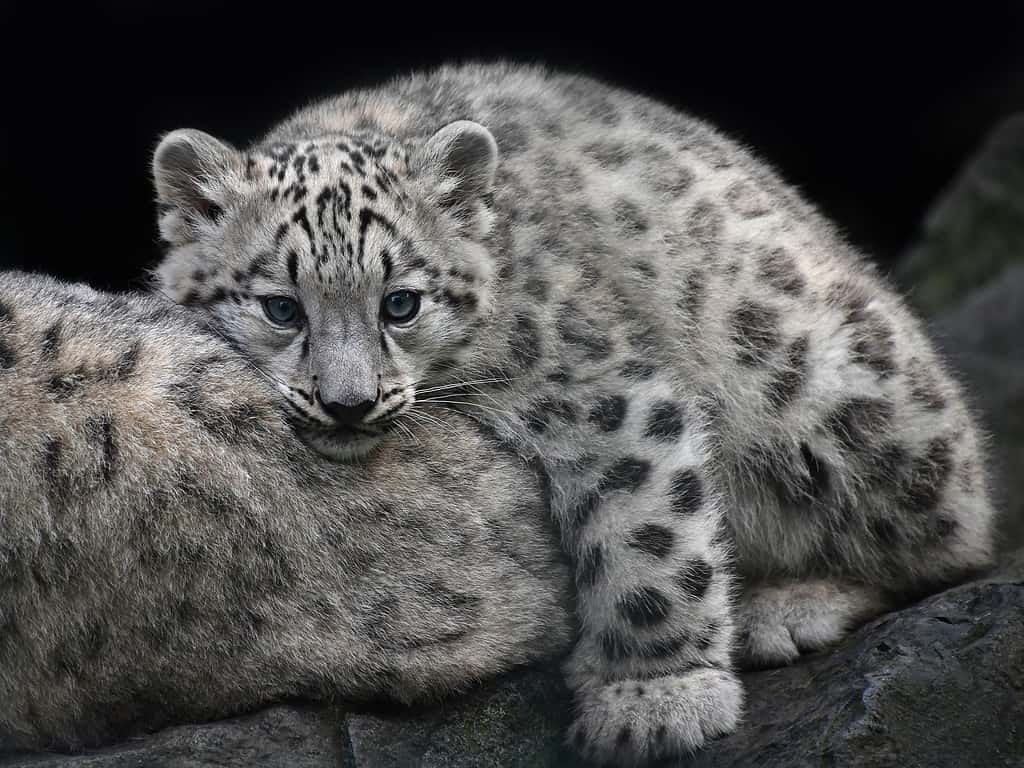
There are only 4,000 to 6,000 snow leopards left in the wild.
©BreakingTheWalls/iStock via Getty Images
Unfortunately, baby snow leopards are a vulnerable species, with their populations steadily dwindling in the wild. This is due to the loss of their habitats, rampant poaching, and retaliatory killings by local communities. Snow leopards, however, are not only stunning animals, but they also play a vital role in maintaining the delicate balance of the Himalayan ecosystem by regulating the population of rodents and small mammals. In the wild, the mortality rate for these cute cubs is alarmingly high, and even as adults, their lifespan is limited to only 15 to 18 years. This is a stark contrast to their lifespans in captivity, where they can live up to 25 years.
Fortunately, snow leopards are now protected in the wild. There are also several organizations dedicated to safeguarding these enigmatic felines and their habitats, such as the Snow Leopard Trust and the Snow Leopard Conservancy. In addition, 12 different countries came together in 2013 to form the Global Snow Leopard and Ecosystem Protection Program. This collaboration continues today, as governments and organizations worldwide continue to work together to preserve snow leopards and their fragile environment.
The photo featured at the top of this post is © Nemyrivskyi Viacheslav/iStock via Getty Images
Thank you for reading! Have some feedback for us? Contact the AZ Animals editorial team.




